Understanding composition in photography can transform your images from snaps to works of art. There are certain rules that can be learned but they shouldn’t stifle your creativity. Once you know the rules they are there to be broken which is a great way to unleash your creative potential.
Definition of Composition in Photography
Composition in photography is the deliberate arrangement and treatment of the visual elements that we see through the viewfinder. It’s about the relationships of objects in the scene, what we choose to include, exclude or enhance to direct the viewer’s attention by conveying drama, story or beauty.
Let us look a little more closely at the fundamental principles of good composition to help us transform our photographs from mediocre to exceptional. In this article, we will break down the commonly used compositional rules that highlight the important elements. We will also introduce some other rules to keep your photography interesting and hold the viewer’s attention.
What Are The Rules of Composition Techniques in Photography?
Table of Contents
- The Basics of Photographic Composition
- Frozen Action Composition in Photography
- Using Depth of Field in Photography Composition
- The Rule of Thirds in Photography Composition
- The Golden Ratio in Photography Composition
- Symmetry in Photography Composition
- Reflection in Photography Composition
- Cropped Frame in Photography Composition
- Frame in Frame Photography Composition
- Leading Lines in Photography Composition
- Complementary Colours in Photography Composition
- Foreground Interest (Texture) in Photography Composition
- Odd numbers (Rule of Odds) in Photography Composition
- Leave Space in Photography Composition
- Contrast (Shadow and light) in Photography Composition
- Declutter in Photography Composition
- Story (Juxtaposition) in Photography Composition
- Dialogue (Balance) in Photography Composition
- Tension (breaking the rules) in Photography Composition
The Basics of Photographic Composition
The introduction of a set of rules in a creative endeavour sounds a little prescriptive at this point. They are, however, helpful guides for beginner photographers rather than draconian dogma. Let’s look first at the simple things we can do to take control of the important thing in the scene.
The first thing we will look at is a still life in a studio when we have maximum control of all of the variables. If your subject is a still life or live model you will have absolute control of the composition and lighting as you will be able to move any of the objects or people in the scene with ease to perfect the arrangement.

The above still life is a good example of when you have full control of the position and lighting of the object in a studio situation.
If your subject is an expansive landscape the structure is a little harder to control as you can’t move mountains or lakes etc. There are several things that you can do to gain control of the composition:
- Change location (move to a place where the elements in the scene have a better relationship).
- Swing the camera left, right, up or down to a different angle to improve the arrangement in the viewfinder.
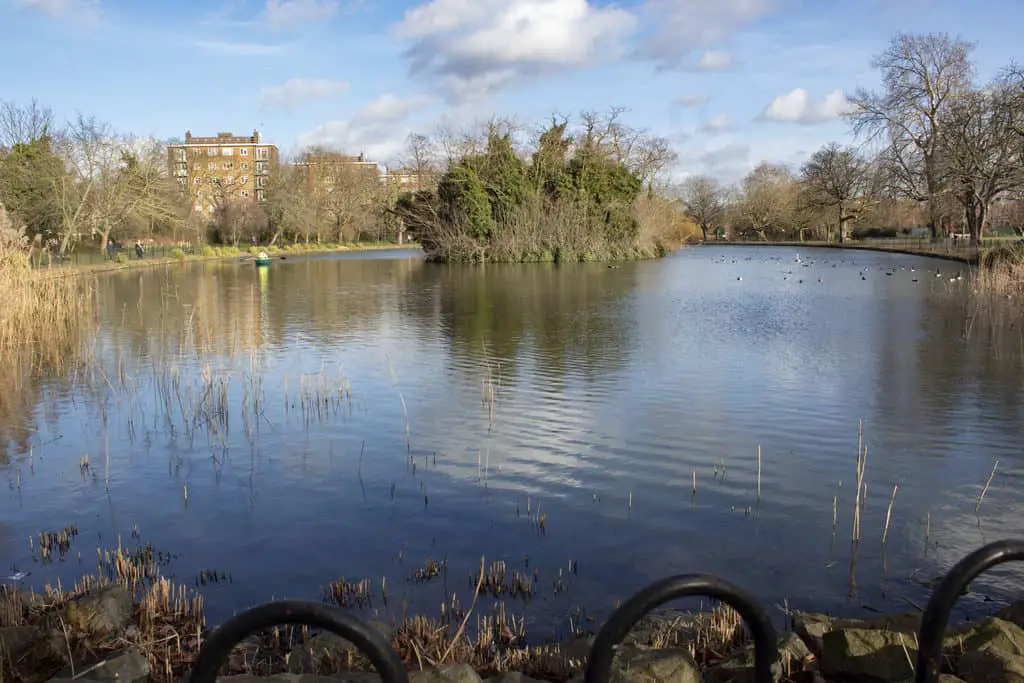
The above photo is an example of a dull composition. Let’s simply swing the camera slightly to the right on the tripod and see if we can view a more pleasing arrangement?
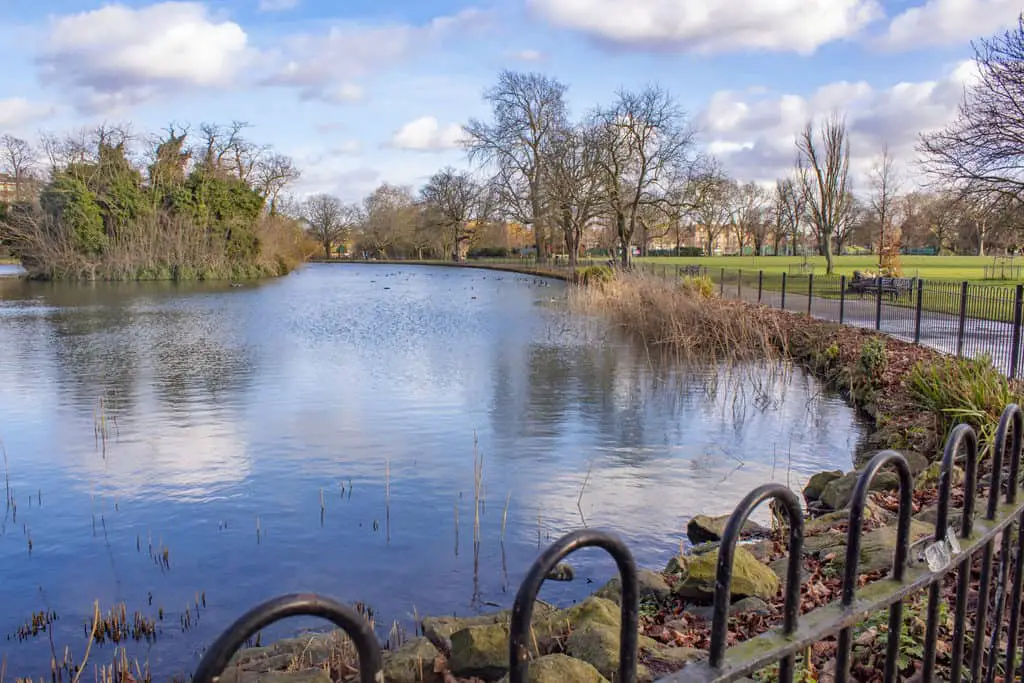
This image now has a lot more going for it. We have foreground interest from the metal fence. We have a curved leading line following the fence and the path that leads us around and through the scene to the little lake island that is more pleasingly off-centre now. The sky also has more cloud detail helping the balance of the overall image from top to bottom. This simple re-framing can be very useful in landscape photos.
- Zoom in or out to re-frame the subject or cut out extraneous details.
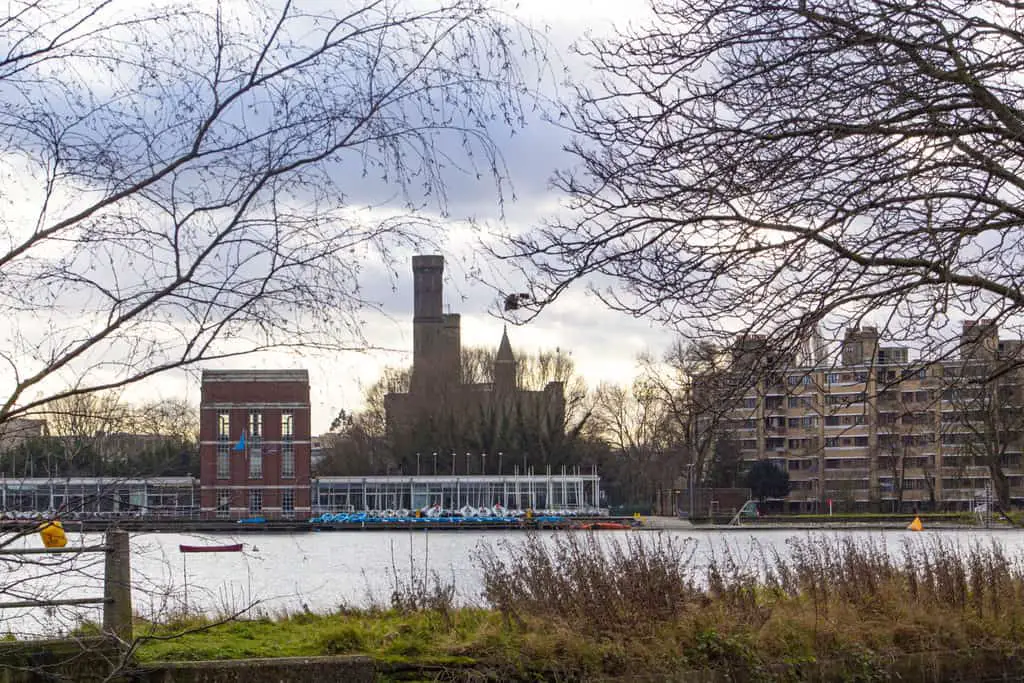
There is a lot of fussy detail in the above photograph. It presents a confusing scene where the main subject is difficult to perceive. Let’s simply zoom in to cut out a lot of the peripheral detail and strengthen the main subject.

Photo by Oscar J Harper
Now, the main subject is obvious; the castle building. The delicate tracery of the tree branches provides a great contrast to the heavy dark mass of the building by framing it and adding interest to the edges of the image.
- Find an elevated position to increase the foreground detail.
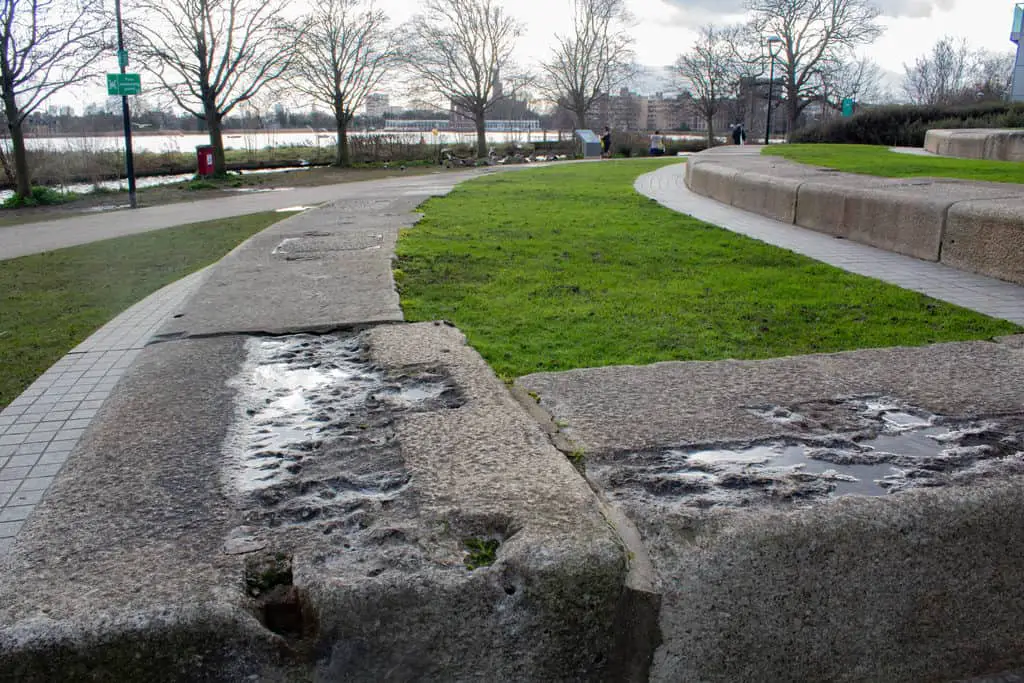
You can tilt your camera down to increase the foreground detail. This creates some interest at the bottom edge of the photo that leads the viewer up and into the image.
- Shoot from a lower position to minimise the foreground and emphasize the sky or distant background.

Look up from your shooting position and see if there is an interesting detail on the horizon or drama in the sky. These are all simple ways in which you can improve the composition without doing more than looking around or changing position and pointing your camera in a slightly different place.
Frozen Action Composition in Photography
If you are trying to photograph a live-action scene where you have no control over the movement of people, vehicles or any unpredictable action, your tools will be patience and anticipation. We wait until the moving objects arrange themselves into a suitable composition that conveys the story or dramatic image that we hoped for.
You have to work fast in these situations with very little time to think. Once you have fixed the settings on your camera you are free to shoot on rapid-fire if necessary. The results can be unpredictable but it’s better to have a few failures if there is that one magical gem amongst them that produces a powerful, dramatic photograph.
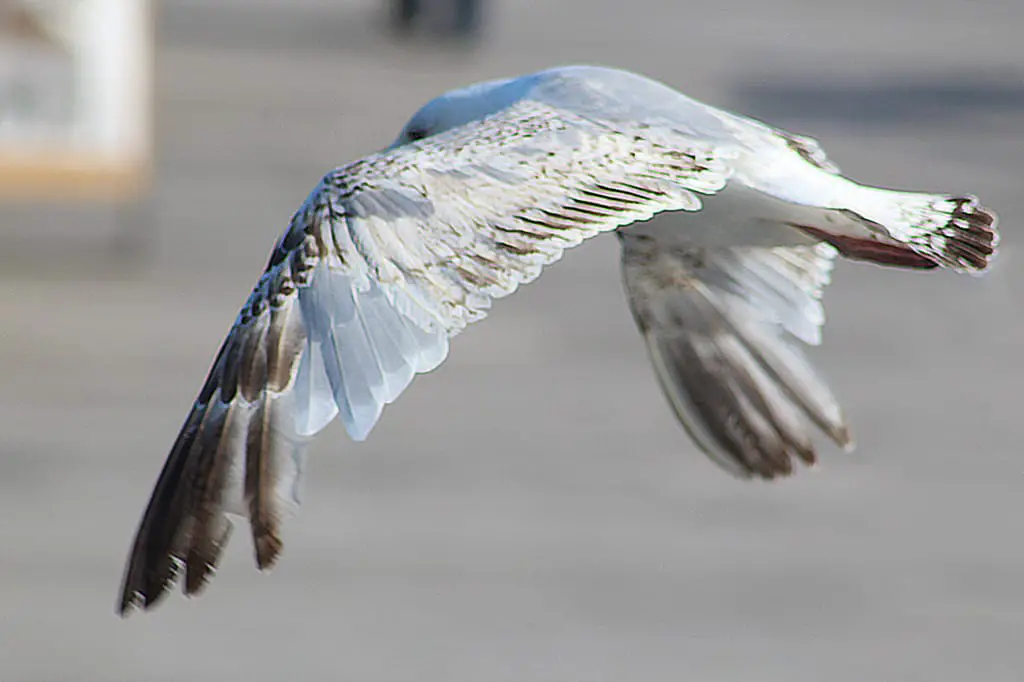
Photo by Oscar J Harper
This photo incorporated a slightly tricky technique of panning while zoomed in. This involved following the moving subject at the same speed and then releasing the shutter whilst continuing to pan. It is a hit and miss process but the very fast shutter speed helps to freeze the action.
Using Depth of Field in Photography Composition
You can also use Aperture to redefine the composition without physically moving the camera or zooming to crop. Choosing a large Aperture will produce a very shallow depth of field. This has the effect of blurring the background and foreground, isolating the subject that has been focussed on, and bringing it into sharp relief. It also increases the sense of depth between the foreground and background. Take a few experimental shots with different apertures until you find the perfect setup for the image.
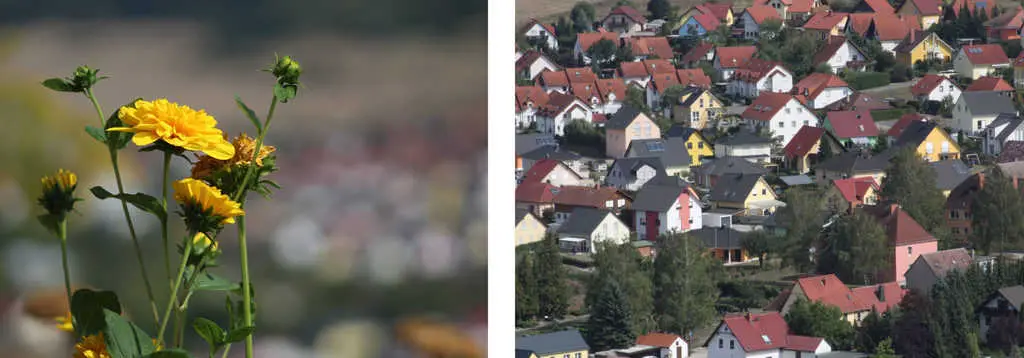
In this image, the flowers were very close to the camera so when we focus on them and use a large aperture opening, they appear to be very sharp against the background village which is totally blurred.
In contrast, if we now focus on the background and close the aperture down to a tiny hole, the whole of the village comes into sharp focus because of the deep depth of field. The composition is also made more dramatic by the abstraction of zooming in and cropping the edges off.
The Rule of Thirds in Photography Composition
This is a well-trodden path in photography but can provide a pleasing result by introducing a degree of proportion into your compositions. If it is something you didn’t know, it is well worth having in your arsenal of skills.
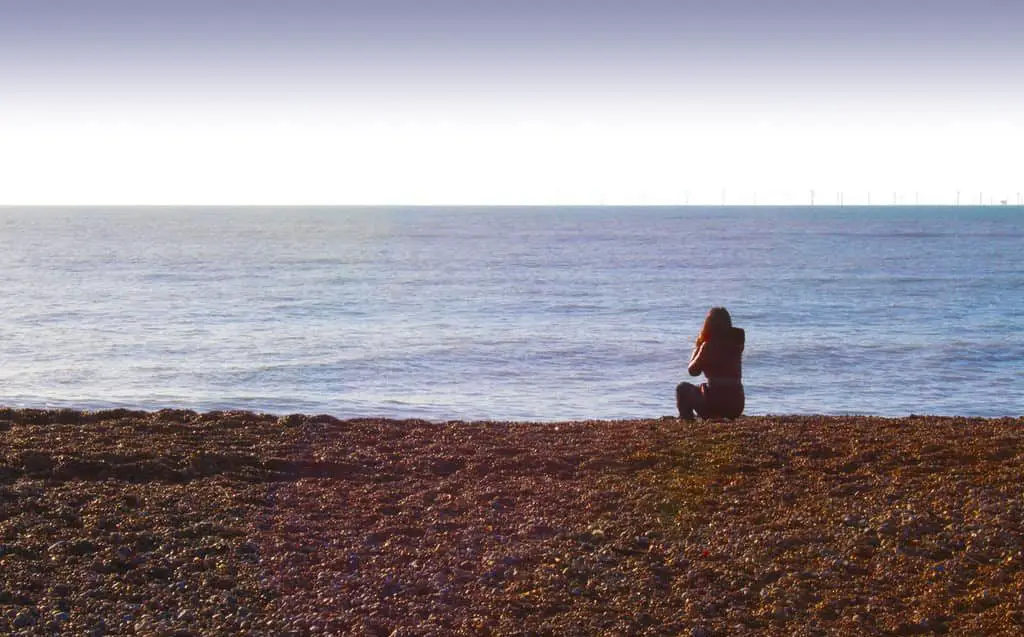
In the photo above you can see three distinct horizontal bands of sky, sea and beach. They are almost perfect one-third bands but you don’t have to be so accurate with the proportions for a successful composition. For added interest, there is the main character sitting approximately one third in from the edge as well.
It is a simple concept to follow; you simply divide the viewfinder area into three bands vertically and three bands horizontally splitting the area into 9 equal rectangles. Some cameras will actually display this grid in screen-view mode to help you overlay it on your scene.
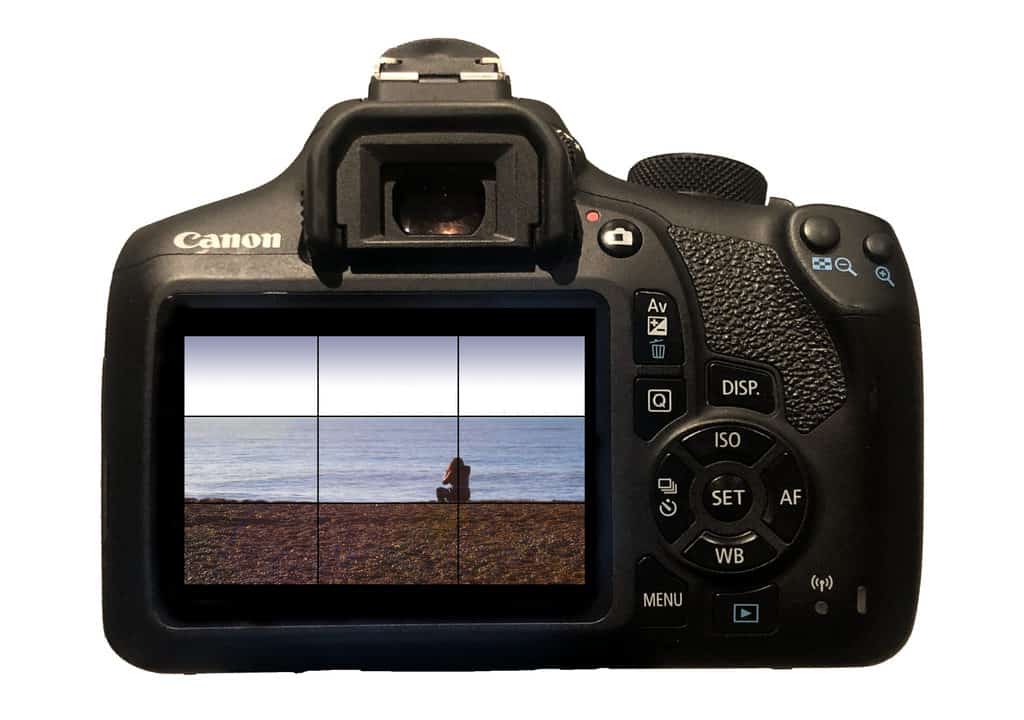
Instead of placing the main subject dead centre, you can now align it to one of the vertical or horizontal lines. It’s possible that the main subject could be placed at one of the nodes where vertical and horizontal lines converge.
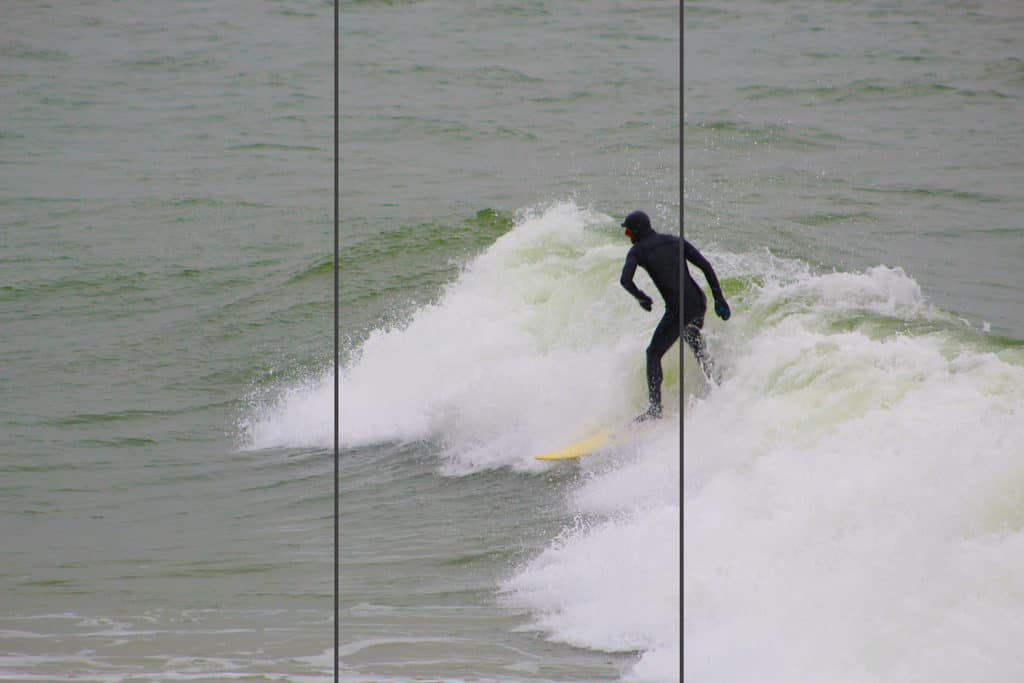
This is an example of the composition of a vertical third. The main subject lies directly on a line one third in from the edge. The composition is also aided by the dark figure being placed over the frothy white surf which leads in from the bottom right corner.
Major landscape features such as a horizon line, distant mountain line etc, could be aligned with the horizontal lines and major vertical features like trees or building edges could be aligned with vertical lines in the grid. This asymmetrical approach to composition often produces a more pleasing result than a centre-placed subject.
The Golden Ratio in Photography Composition
Simply put, the Golden Ratio is a ratio of 1 to 1.6. So it is a kind of modified Rule-of-Thirds which is a simpler ratio of 1 to 2. It has been considered to be the perfect ratio and has been used in art for centuries. It is also found in nature quite often.
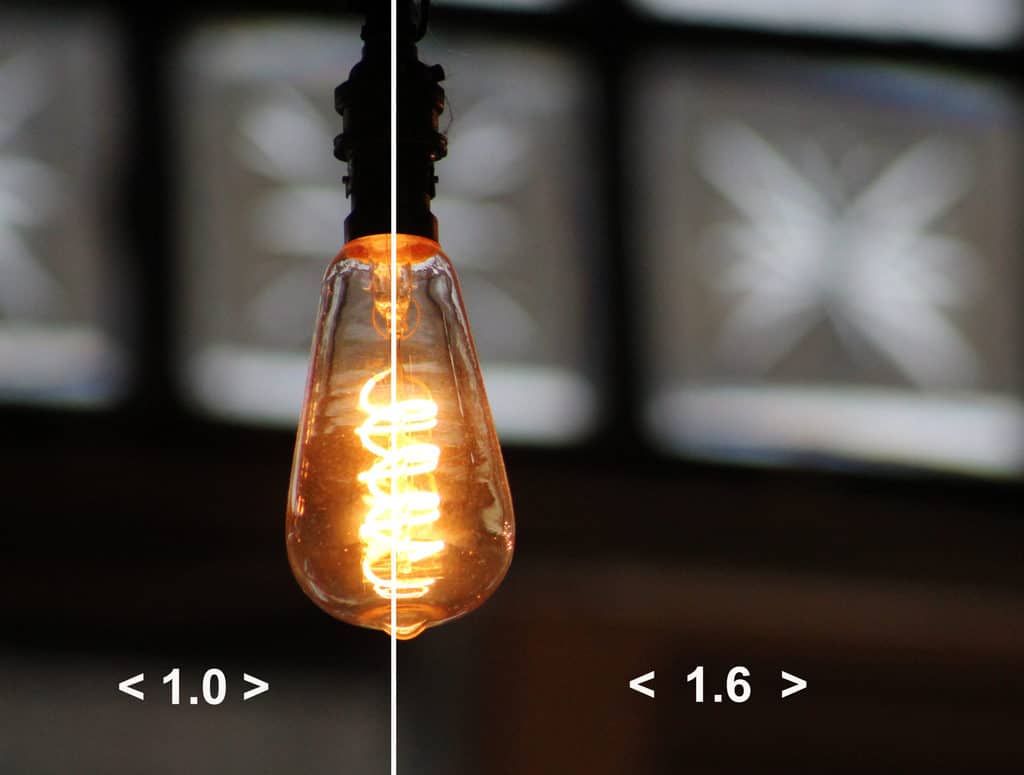
You can see that the Golden Ratio produces a pleasing off-centre arrangement.
In photography, it is fairly easy to apply to your compositions by simply placing the line or point of interest just off one of the rule-of-thirds lines or nodes by moving slightly closer to the centre of the frame. I don’t believe you need to be mathematically perfect with your placement to achieve a pleasing result.
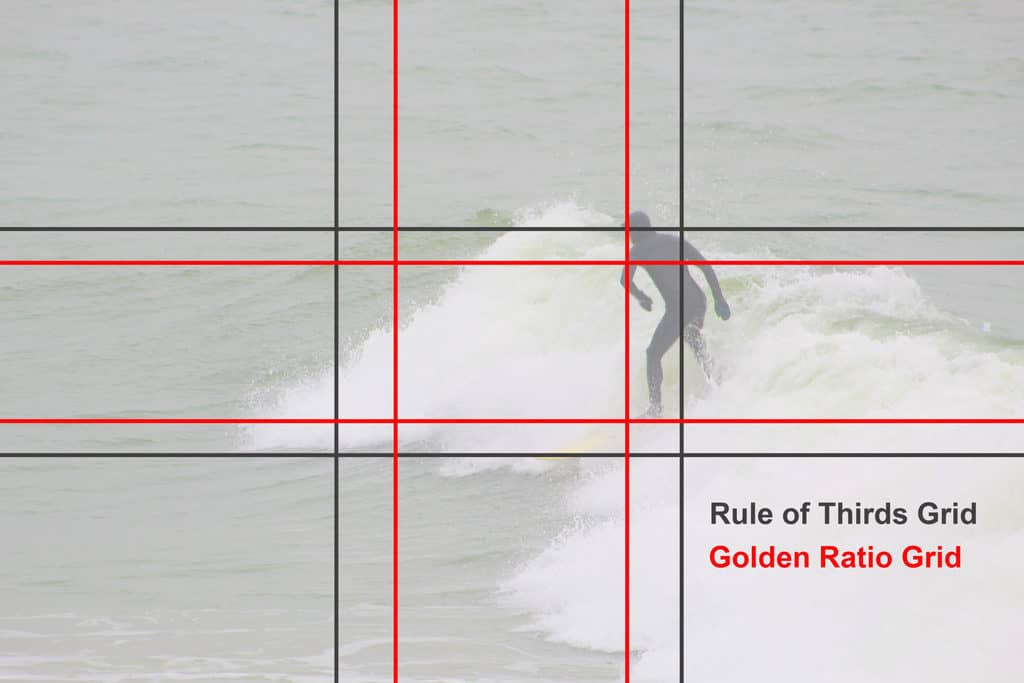
The Golden ratio grid brings the position of the main subject slightly closer to the centre of the frame than the standard rule-of-thirds grid. Let’s not be too rigid about the grids though. Placing a subject anywhere in the vicinity of these grids should produce an agreeable composition.
Fibonacci Spiral (Golden Spiral) in Photography Composition
There is a more complicated compositional device that is quite difficult to visualise in the frame when taking a photograph. It is known as the Fibonacci Spiral and is roughly based upon the Golden Ratio.
It is a spiral pattern of diminishing squares roughly at a ratio of 1.6 to 1. If you then draw an arc of a circle from the inner corner of each diminishing square, they join up to make a spiral pattern as you might find in a seashell.
The spiral culminates in a cluster of tiny curves that appear to define a focal point to place an object in the scene. The location of this point is roughly just outside the Rule-of-Thirds gridlines; further away from the centre of the frame.
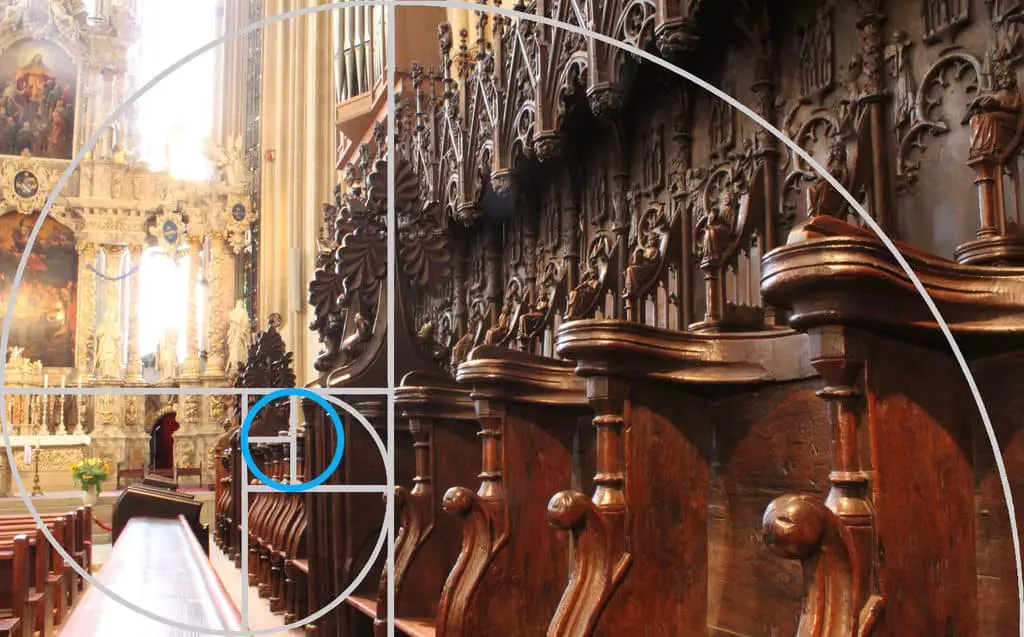
The perspective in the above photo helps to illustrate the Fibonacci Spiral. The scale of detail diminishes as the spiral spins in towards a focal point.
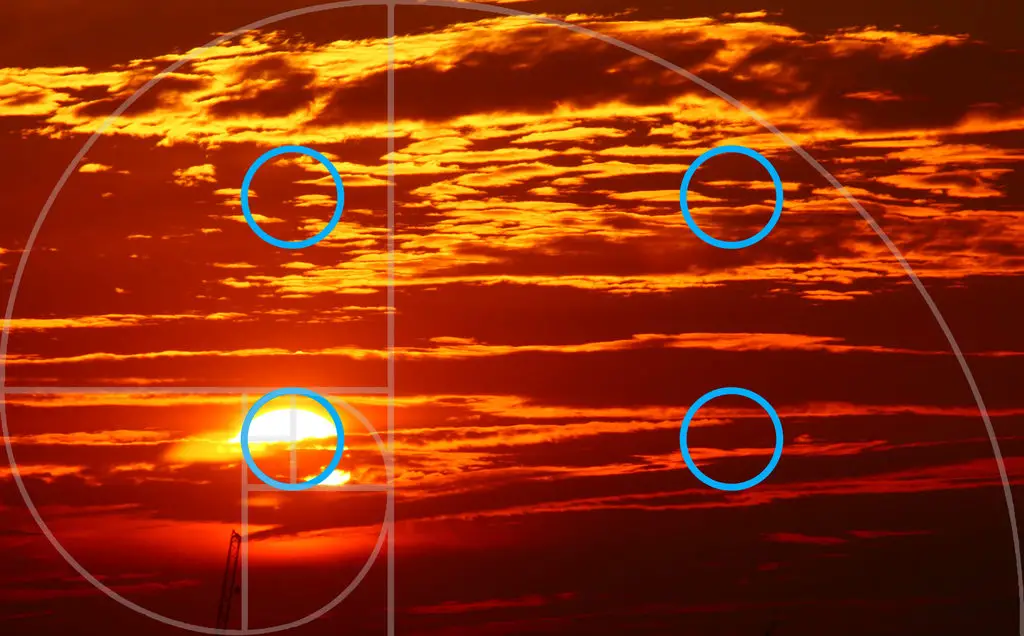
The sun in the above photo coincides with a Fibonacci focal point. By flipping the spiral in both directions we can identify four focal points that could be possible locations for the main subjects.
How do we apply the Golden Ratio Fibonacci Spiral focal points in very simple terms and in a way that is easy to visualise through the viewfinder? We simply place points of interest just off the Rule-of-Thirds grid on either side of the grid lines.
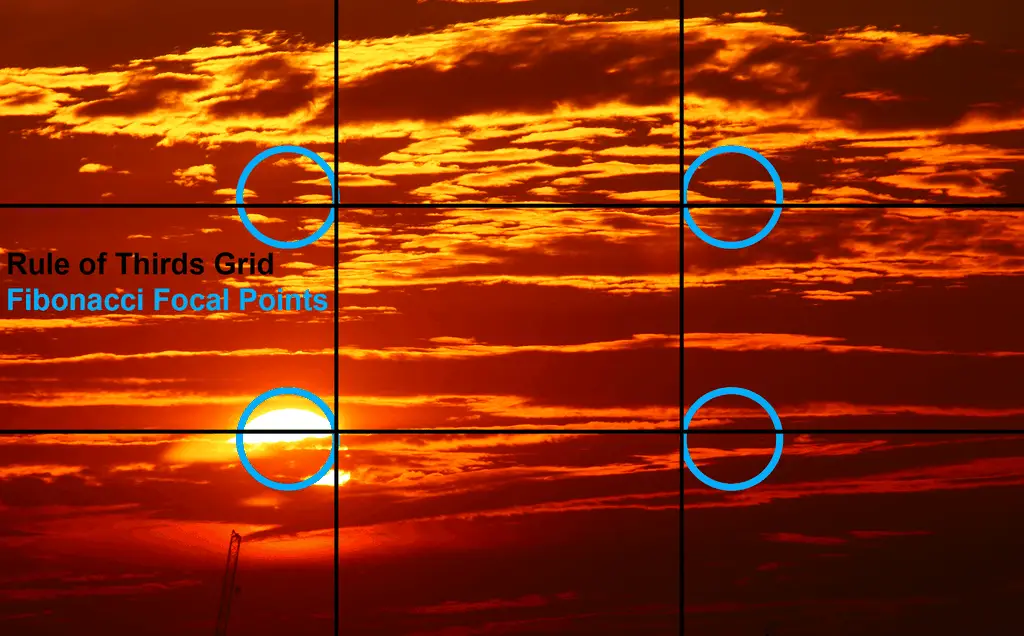
Symmetry in Photography Composition
There are times when an asymmetric composition is not the best way to go, however.
One example would be If the main elements you are viewing through your viewfinder are strongly symmetrical with a dominant central object and bold, mirrored elements on either side. It would probably be counterproductive to ignore that powerful relationship.
In this case, the use of the symmetrical composition would work very well so don’t be cautious about taking the opportunity; anything else might diminish the value of the image.
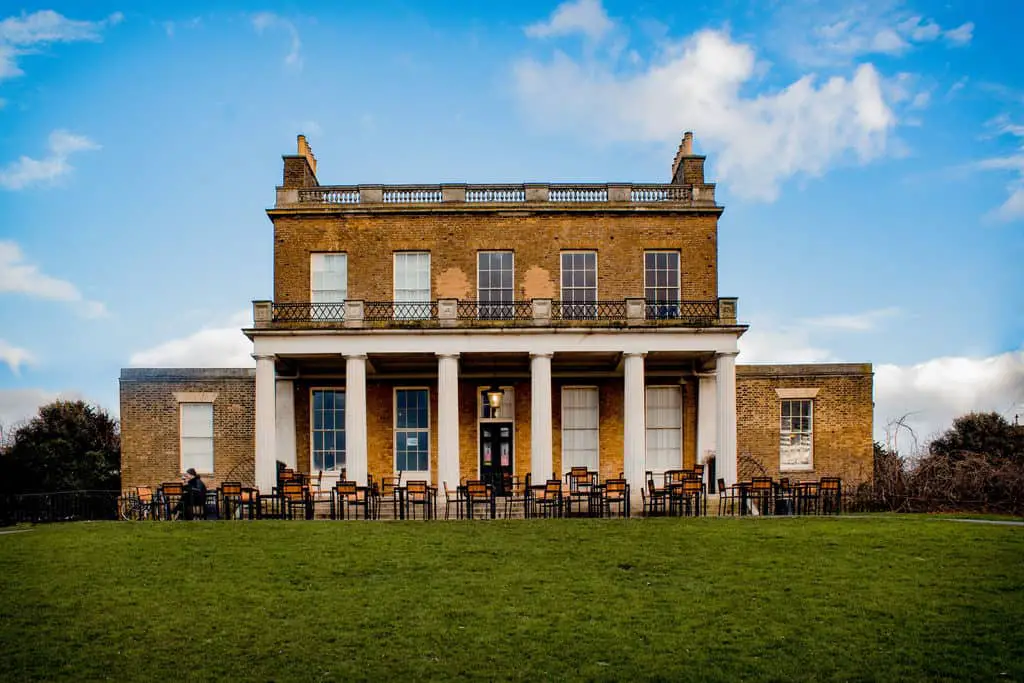
Photo by Oscar J Harper
The building above is strongly symmetrical with mirrored wings on either side; even the bushes at the edge are roughly mirrored. Position yourself square-on and directly in the centre to take this engaging composition.
Reflection in Photography Composition
Reflection is a special version of symmetry. This occurs whenever a reflective surface produces a hazy or slightly less luminous mirror image of the main subject. This can produce very interesting results and can occur if you are taking photographs near:
- Lakes
- Rivers
- Oceans
- Puddles
- Frozen water
- Mirrors
- Polished metals
- Flat Glass
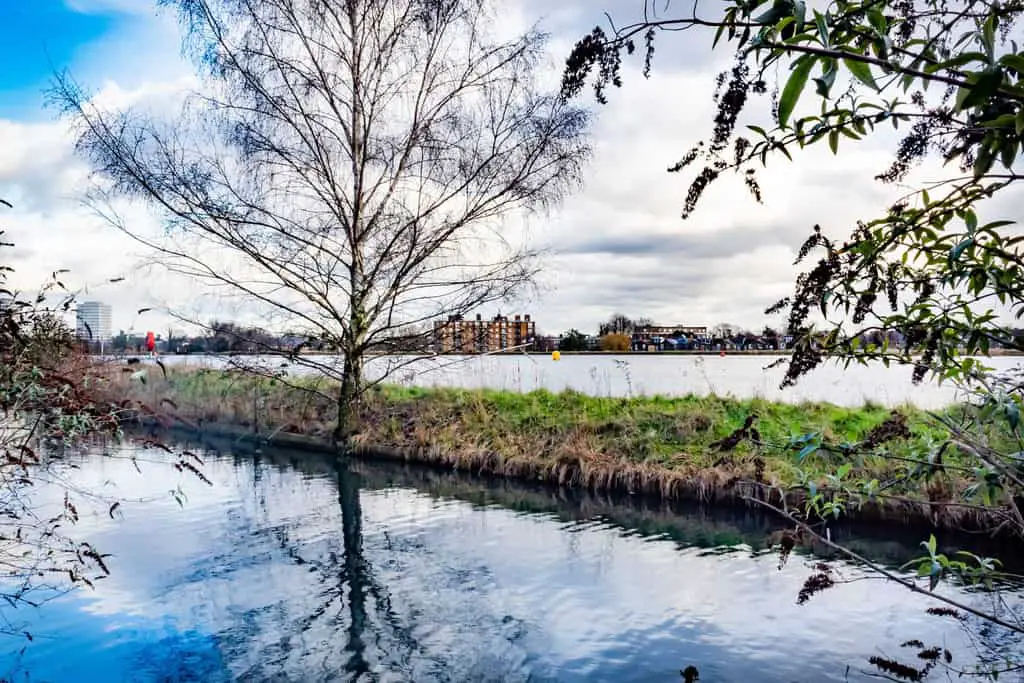
Photo by Oscar J Harper
The photo above is not a perfect mirrored reflection but the wobbly reflection in the water provides interesting detail and balance to the bottom half of the image.
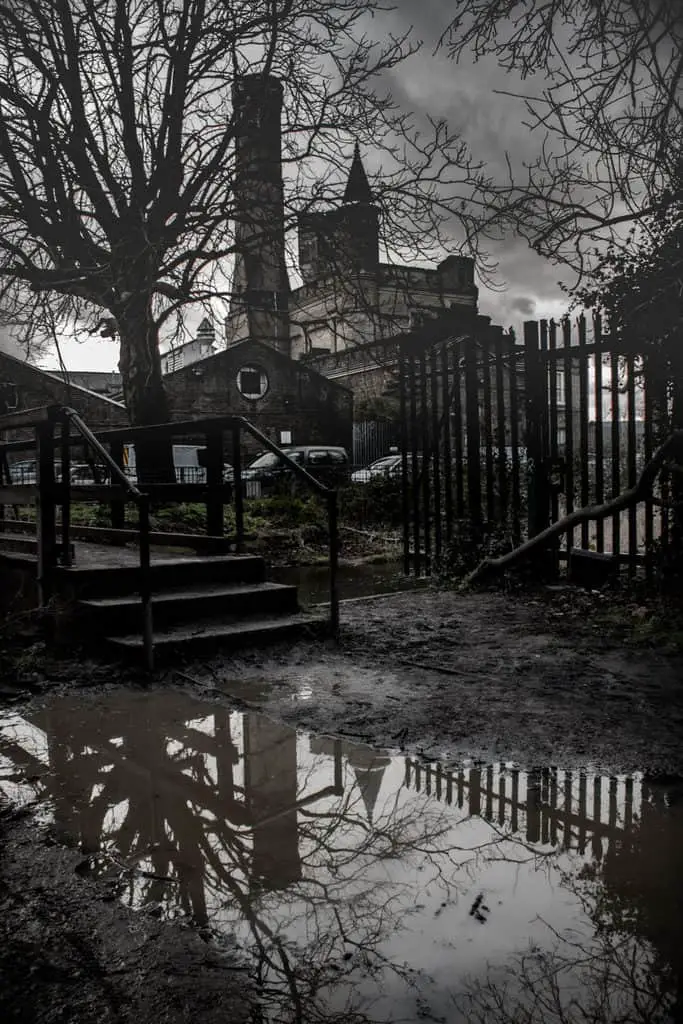
Reflection Example
In this image, we see the gloomy castle partially reflected in the muddy puddle. This helps to link the top and bottom halves visually.
The dark sky and skeletal winter trees add to the dark, brooding mood of the photograph.
Photo by Oscar J Harper
Cropped Frame in Photography Composition
You can crop an image in three ways.
- You can move closer to the subject.
- Zoom in very close.
- Crop the image in post-production software like Photoshop or Lightroom.
They all have the effect of filling the frame with an abstracted, detailed view of the subject with no space around it. This can be a very dramatic and powerful composition focussing the viewer’s attention on the extreme detail without a distracting background.
Often the crop is so extreme that the edges of the subject are removed. This can often produce an unusual, abstracted but interesting image. It can provoke the question “What’s beyond the frame?”.
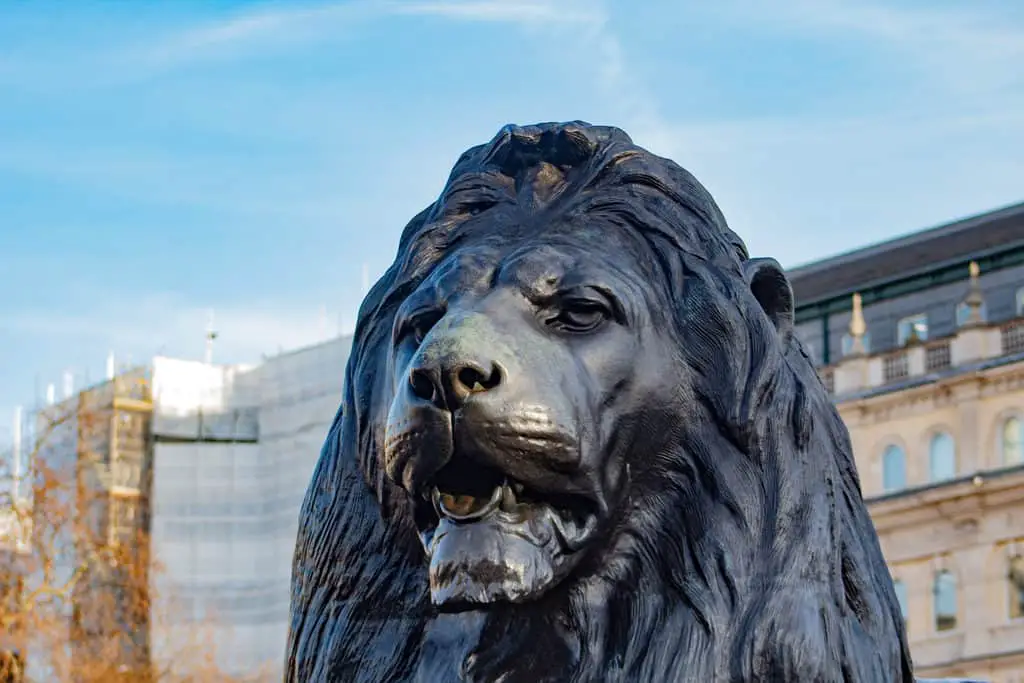
Here’s a standard view of one of the lions in Trafalgar Square. The background was unappealing but I couldn’t change position without losing the face-on image that I wanted.
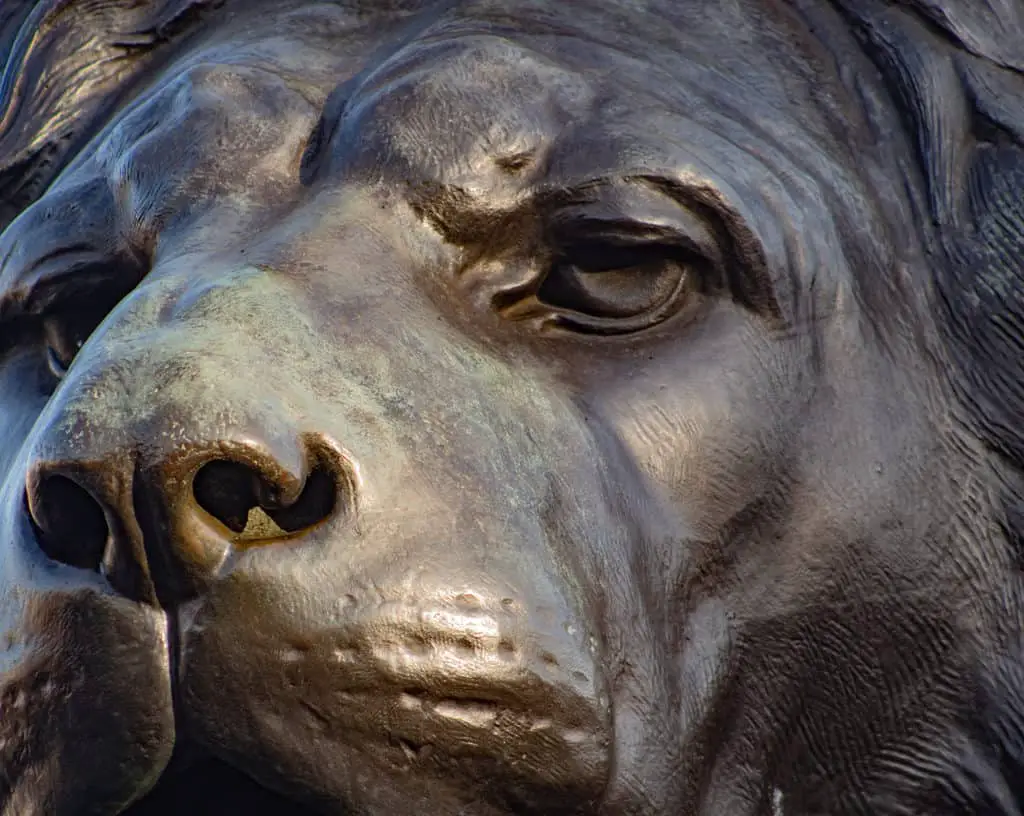
When we zoom in extremely close by changing the focal length we cut out the messy background and focus the viewer’s attention on the eye and the fine details. You can see the sculptor’s marks from working on the original to create the mould before the bronze was cast. You can also see the green oxidation of the metal as it weathers over time. These fine details tell the story of its creation and its history made possible by the extreme crop.
Frame in Frame Photography Composition
The edge of the visible viewfinder produces a natural edge to our photographs which we can work with to define our window on the world. It is, however, possible to introduce a second frame within the scene to add an extra layer of interest and to reframe another point of interest.
This has the effect of adding depth and a 3 dimensional quality to the scene. Walk around your location and look out for frames such as arches, gates, structures and ruins. They can even be natural frames like trees, branches, bushes, caves or waterfalls.
Look through the frame and see if there is a further point of interest that can become a subject focal point to add another layer of interest. Move around it if you must, until an interesting, multilayered composition reveals itself.
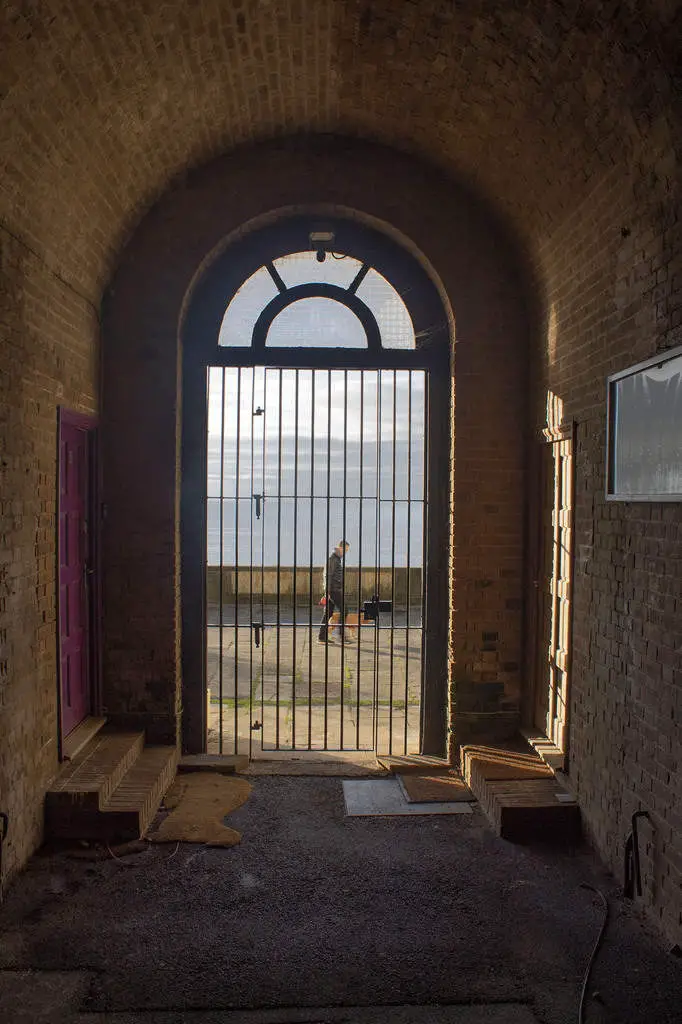
Frame in Frame Example
Here, the edge of the photograph is the first frame and the iron-gated opening to the sea-front is another frame within the frame. The second frame has also captured the man walking his dog. Beyond the man, the sea and the sky are framed to add multiple layers to the composition.
Photo by Oscar J Harper
Leading Lines in Photography Composition
Leading lines are very strong directional signals in the scene that help to guide the viewer into the image and towards a point of interest. They are often related to perspective.
Leading Lines can be created by:
- Paths
- Walls
- Pavements
- Roads
- Fences
- Handrails
- Buildings
- Bridges
- Structures
- Patterns
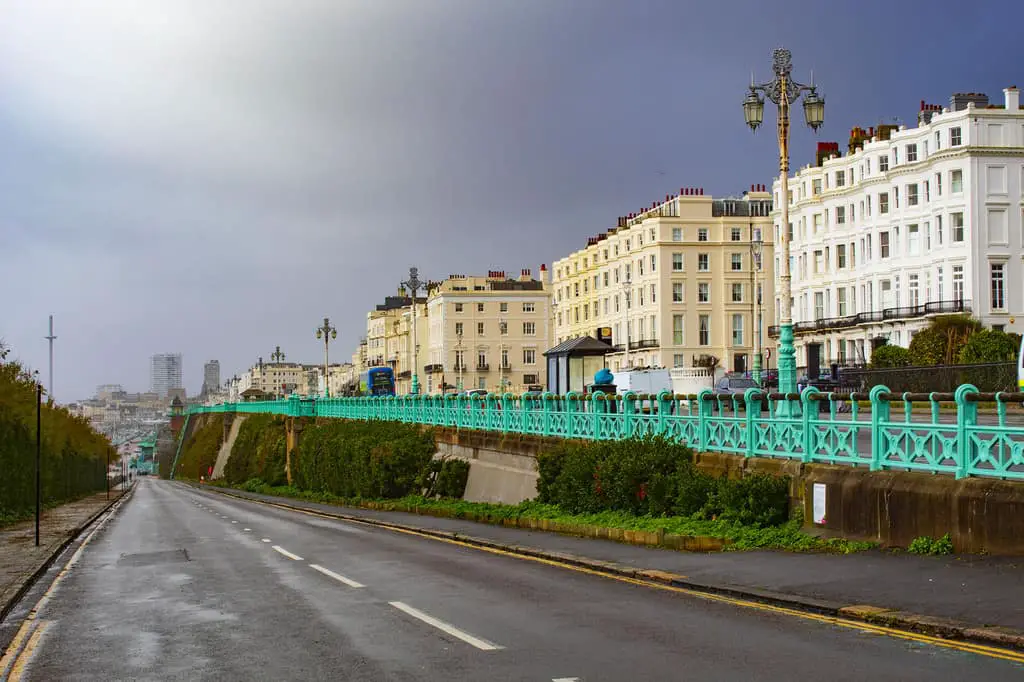
There are many leading diagonal lines in this scene in Brighton, UK: the pavement edges, the yellow parking lines, the dotted white road line, the retaining wall, the green cast-iron fence even the line of buildings at the top of the image. They are all leading and guiding the viewer towards the town centre cluster and the tall pole tower that is a viewing platform.
They don’t have to be straight lines, they can be meandering, curving strings. These gently take the viewer on a journey into the scene. They can also be a very attractive part of the composition; a visual hook that might contrast with other more geometric forms in the view.
Curved Leading Lines might be suggested by:
- Paths
- Rivers
- Roads
- Hedgerows
- Shorelines
- Railway lines
- Patterns

The rail tracks in this image start off straight and then begin to curve towards the tall skinny pole tower on the horizon.
Complementary Colours in Photography Composition
If there are strongly contrasting colours in a photograph it can produce a very striking image. There is a special group of contrasting colours known as Complementary Colours. They are so-called because they appear to complement each other when shown together; they make each other ……. look better. They are opposite colours and have the strongest colour contrast.
They seem to have a visual harmony that is not jarring or uncomfortable. Examples of pairs that have this complementary quality in the simplest form are:
- Red & Green
- Blue & Orange
- Yellow & Purple
You can see that these pairs are made up of one of the primary colours (red, blue & yellow) along with a secondary colour (green, orange & purple). The secondary colours are made by mixing the two primary colours that are left over after choosing one primary as the first member of the complementary pair:
- Red & (Blue & Yellow mixed) Green
- Blue & (Red & Yellow mixed) Orange
- Yellow & (Blue & Red mixed) Purple
The pairs of colours are chromatically opposite and thought to work well together. There are many variations apart from the primary combinations shown above. The opposite pairs can be more easily seen on a colour wheel which can show all the hues and variations possible. They are physically opposite on the colour wheel.

Look out for these pairs or variations of them in your scenes and arrange them in the compositions to take advantage of the complementary chemistry that can occur.
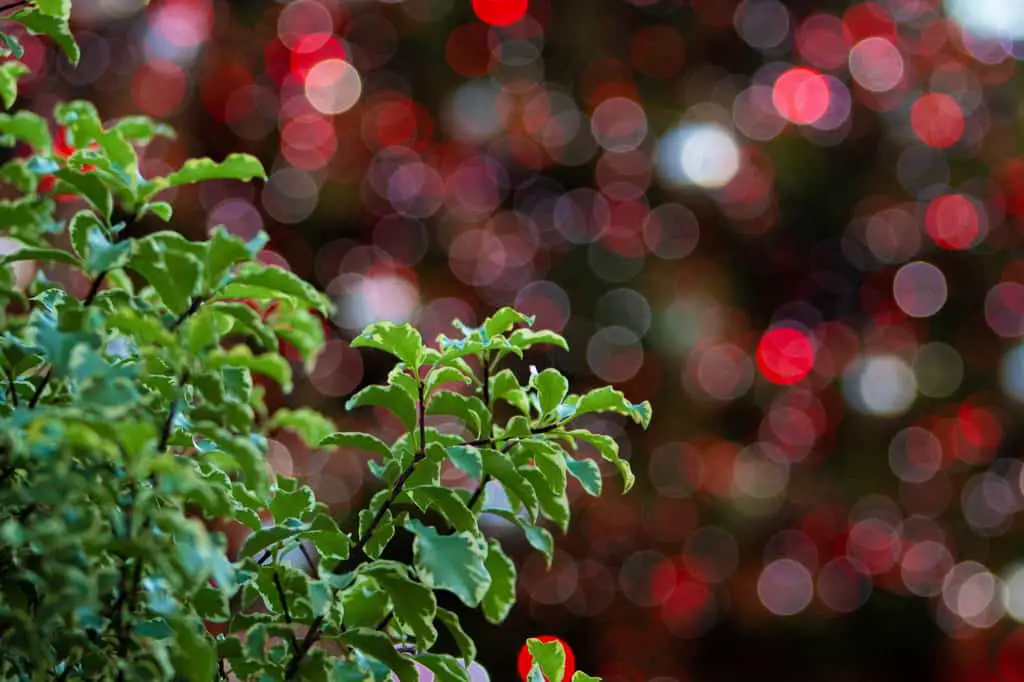
Photo by Oscar J Harper
The above photo was taken around Christmas time in Covent Garden, London. The blurred background is the red light bokeh of an enormous Christmas tree.
Bokeh is the visual quality of the out-of-focus parts of an image dependant upon the lens being used and size of the aperture. The effect is enhanced with faster lens and when points of light are present.
The foreground is a contrasting and complementary green bush that is in sharp focus.
Foreground Interest (Texture) in Photography Composition
When viewing a scene don’t ignore what is right in front of you; close to your feet. Look down and see if there are any interesting textures or details that could add interest to your foreground.
You can think of an interesting foreground as a bottom frame for your photograph. This adds a layer of detail and helps to lead the viewer up and into the image.
Things that are close to the camera are naturally more detailed so making them more prominent in the bottom portion of the image can help the overall composition if the distant background lacks detail or interest.
Try crouching down or lowering your tripod. This small move can totally transform your image. It could be an object, an interesting wall, a tree stump, almost anything to lift the compositional value of the foreground. This technique has the advantage of adding layers of depth to the composition.
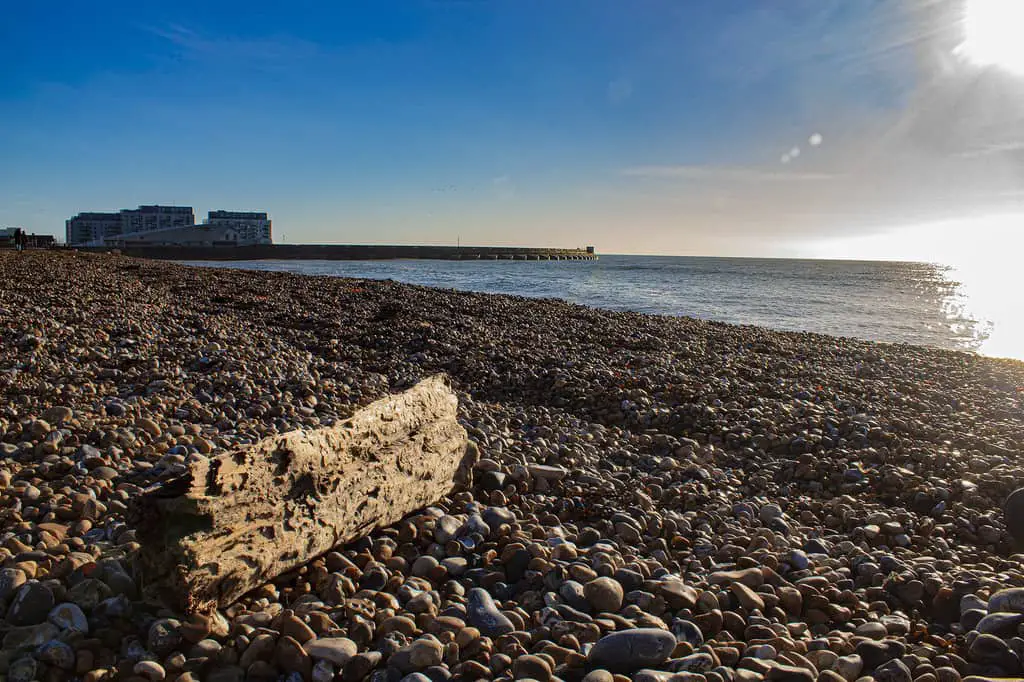
Photo by Oscar J Harper
To ensure that the whole photograph is in sharp focus from foreground to horizon don’t forget to use a small aperture. There’s lots of texture here with the pebble beach and battered driftwood helped by the shadows from the low, setting sun.
Odd numbers (Rule of Odds) in Photography Composition
It is thought that an odd number of objects or subjects in an image is more visually appealing than an even number. For this to have a strong impact the objects have to be the same or similar. They have to have a similar visual weight otherwise they are just an odd number of random objects in a scene.
I believe it can only really works with small odd numbers like 3 and 5. Going beyond this quantity, it becomes very difficult for the viewer to perceive if there are an odd or even number of objects in the scene unless they are laid out in a rigid grid or pattern.
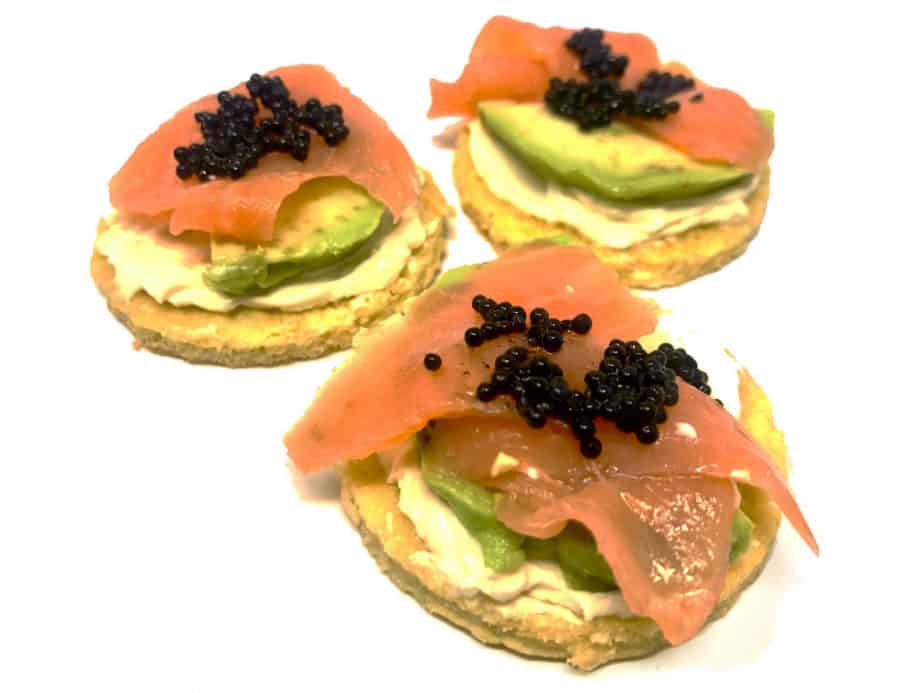
The objects have to be clearly visible and separated from a cluttered background for the effect to have the most impact.
Leave Space in Photography Composition
Sometimes, leaving space around a subject or object to breathe can produce a more powerful composition. This sounds like the opposite of Cropped Frame composition where we zoom in for intensity. They are both useful tools to improve the direction of attention on the main subject.
It is best if the surrounding “space” is relatively uncluttered to maintain the visual weight of the target object. This can be a plain background, a contrasting colour, texture or a blurred bokeh.
If the subject has a definite direction or orientation, it is best to leave more space on the side in which the subject appears to be looking or pointing into. This creates a more comfortable relationship with the spaces within the scene. It also allows room for an object to look or move into especially if the photo is a frozen action of movement.
As we read from left to right in the West, it is thought that allowing more space on the right of the object produces a more pleasing and comfortable direction to read and explore the image. It’s not always possible to set up the scene in this way though and I don’t think we have to stick to this rigid rule. Giving space to an object that is orientated in any direction; left, right, up or down, can produce a great composition.
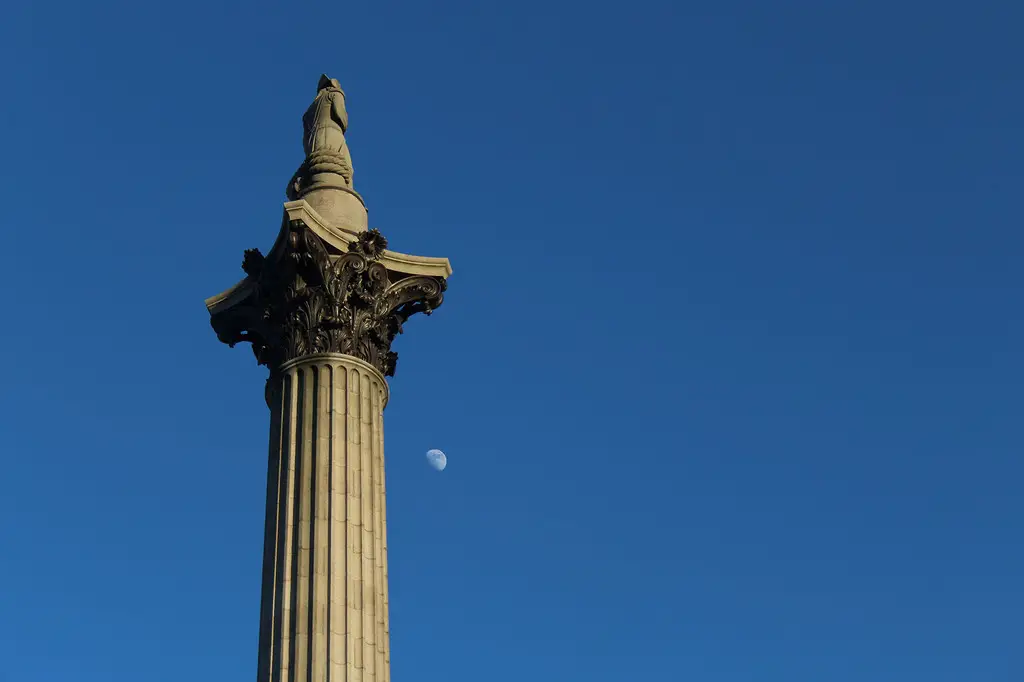
Photo by Oscar J Harper
This image shows a very strong vertical subject on a very clean background. Although the statue is looking away from us we can see that it has a comfortable amount of space to gaze into. The presence of the moon enhances the feeling of enormous space to the right of the subject.
Contrast (Shadow and light) in Photography Composition
“Were it not for shadows, there would be no beauty.”
Jun’ichirō Tanizaki – In Praise of Shadows
Without light and shadow, we don’t see much. They define everything we observe. If there is too much of one or the other, however, there is little contrast and little chance of drama.
Strong contrast can bring texture to life, however subtle. To bring the best out of texture the light source has to be in just the right location to create the shadows and enhance the definition. In a studio, this is very easy to control as you can move the light source easily or change the intensity of the flash or lamps.
Outside it is more difficult to control and you may have to exercise some patience as you wait for the sun or moonbeams to strike the subject at just the right angle to create the desired amount of contrast to lift the texture.
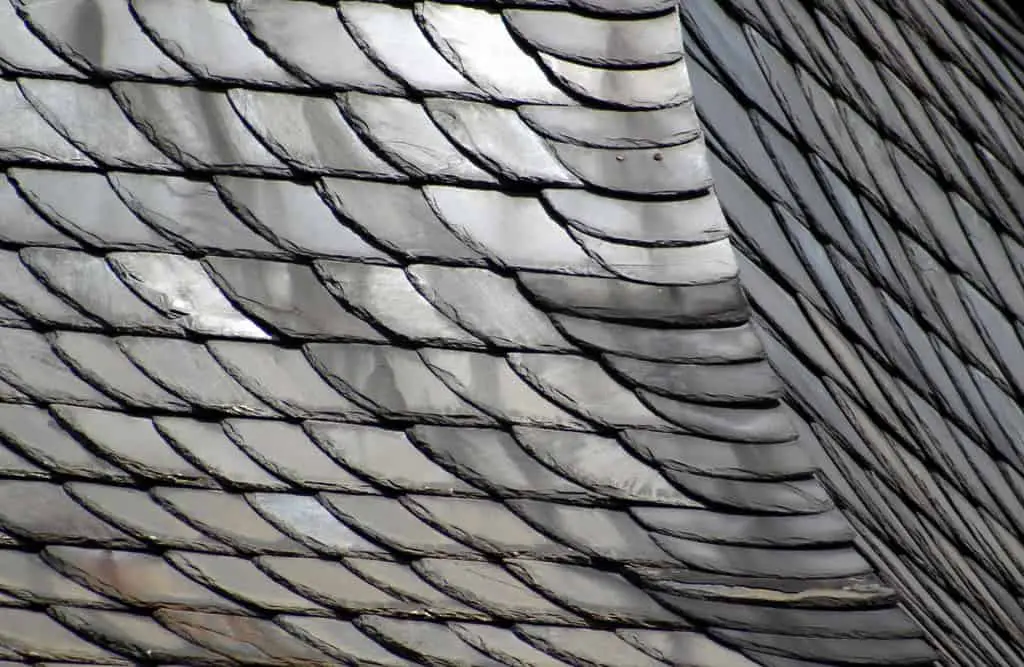
An interesting slate roof was photographed on a summer’s day around noon. At this time of day, the sun picked out the rough detail on the edges of the hand-worked slate tiles.
“We find beauty not in the thing itself but in the patterns of shadows, the light and the darkness, that one thing against another creates.”
Jun’ichirō Tanizaki – In Praise of Shadows
Strong contrast can be used to frame an image by providing a heavy border or as a foreground interest to add weight to the base and ground the photo. This helps to contrast the lighter, brighter parts of the image and create a visual balance.
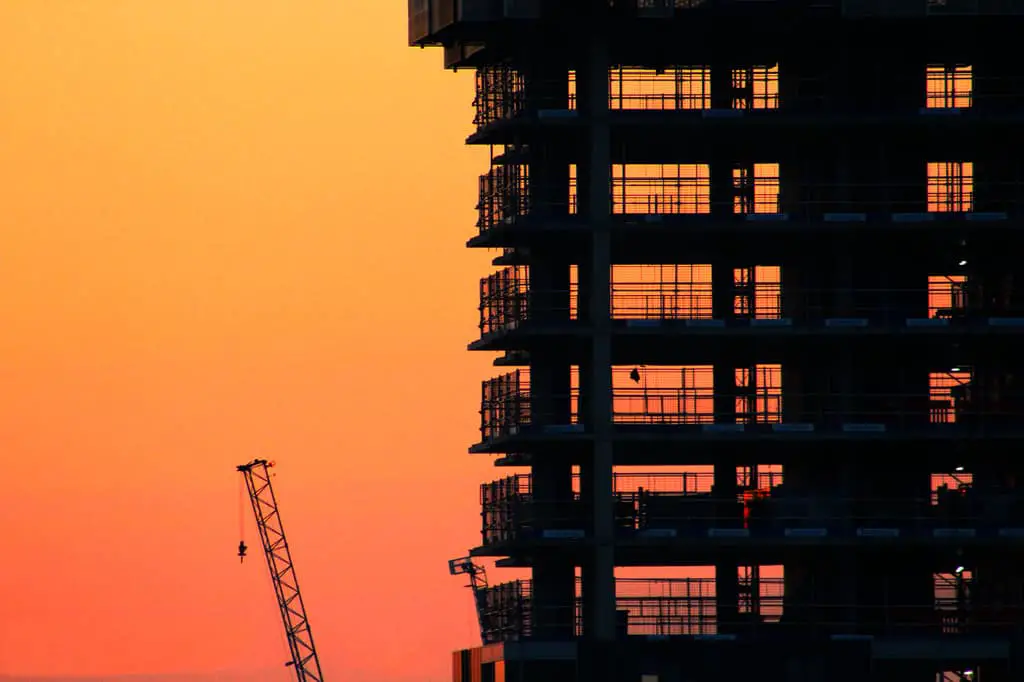
The dark heavy mass of the building structure contrasts with the light delicate crane jib. Every element in the scene is a monotone black silhouette which is visually very strong against the burning orange of the sunset sky.
Bright subjects on very dark backgrounds stand out and help to direct the attention onto the subject.
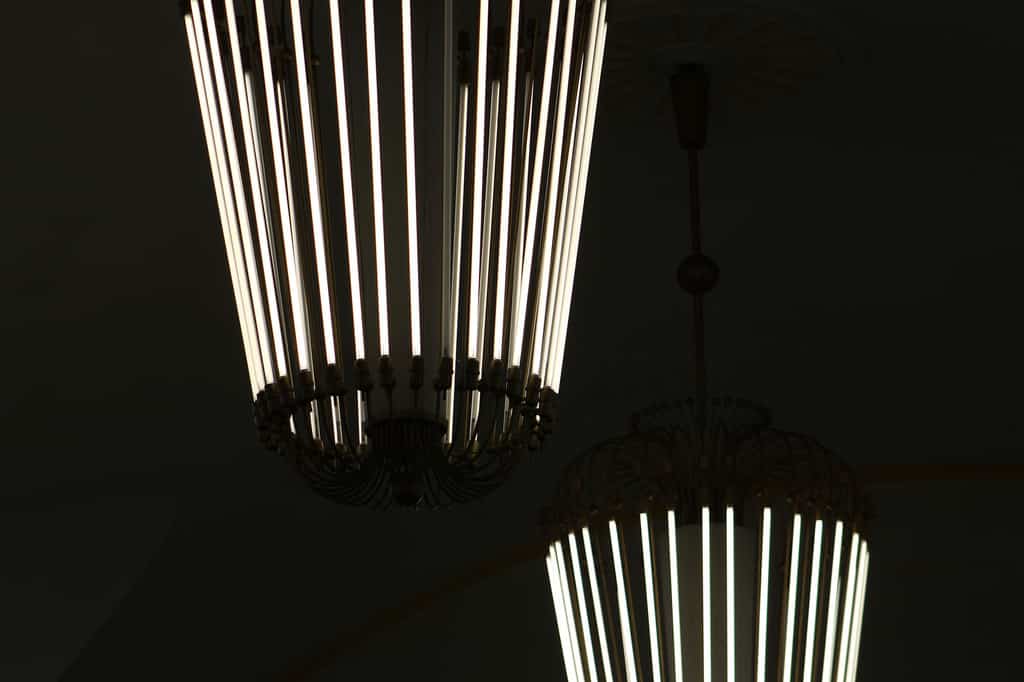
These giant hanging light fittings didn’t illuminate the dark space but simply glowed against the inky black interior.
The opposite of this is a dark silhouette on a light background. There is little detail in the shadow but it creates a powerful graphic image.
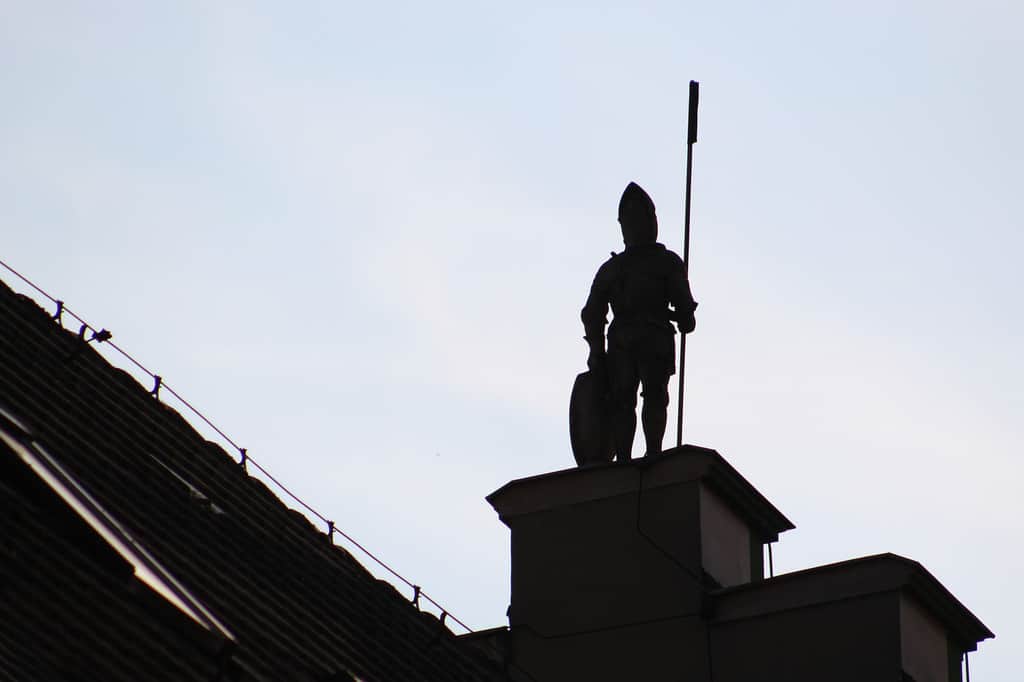
Declutter in Photography Composition
What can spoil many potentially great photographs is a messy, distracting background. It can take attention away from the main subject or even confuse the viewer. The photographer sometimes doesn’t notice the background as it might look different through the viewfinder than it does in the final image.
There are several ways to declutter the backgrounds of your photographs. You could simply change your position by moving around until you see a less fussy backdrop. If possible, you could elevate or lower your position to find more sky or ground.
You can actually dissolve the cluttered background without changing position, in the correct lighting conditions. You can use your camera to magically melt away the messy background by using a shallow depth of field. This will bring the main object into sharp focus and render all the distractions of the background (and foreground) into a soft blur.
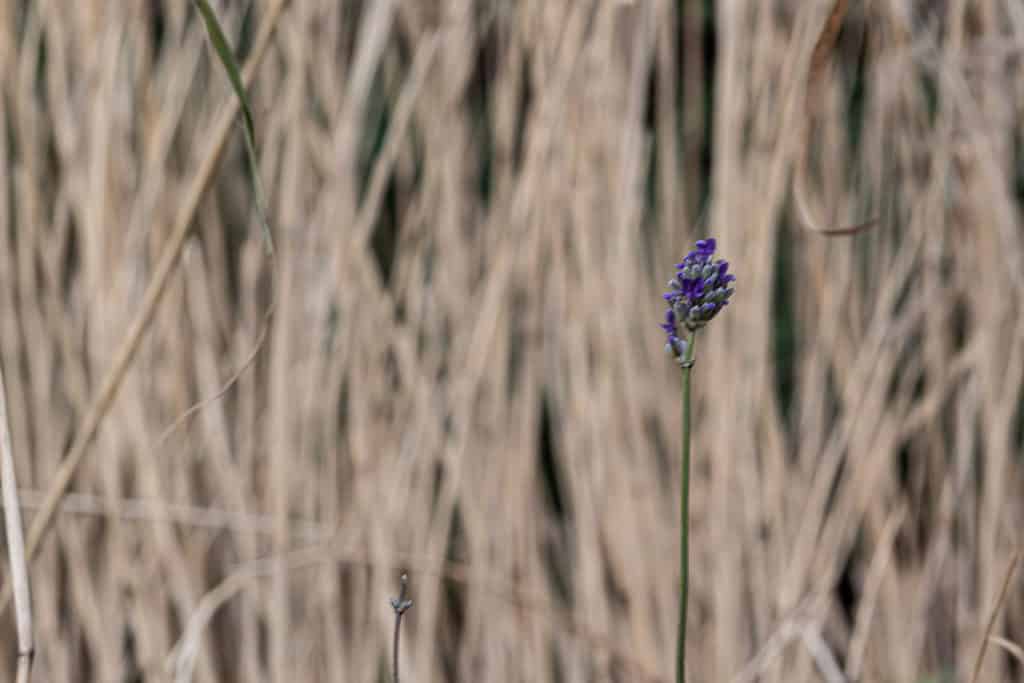
Photo by Oscar J Harper
This single flower doesn’t stand out too well against this untidy backdrop of reed grass stalks.
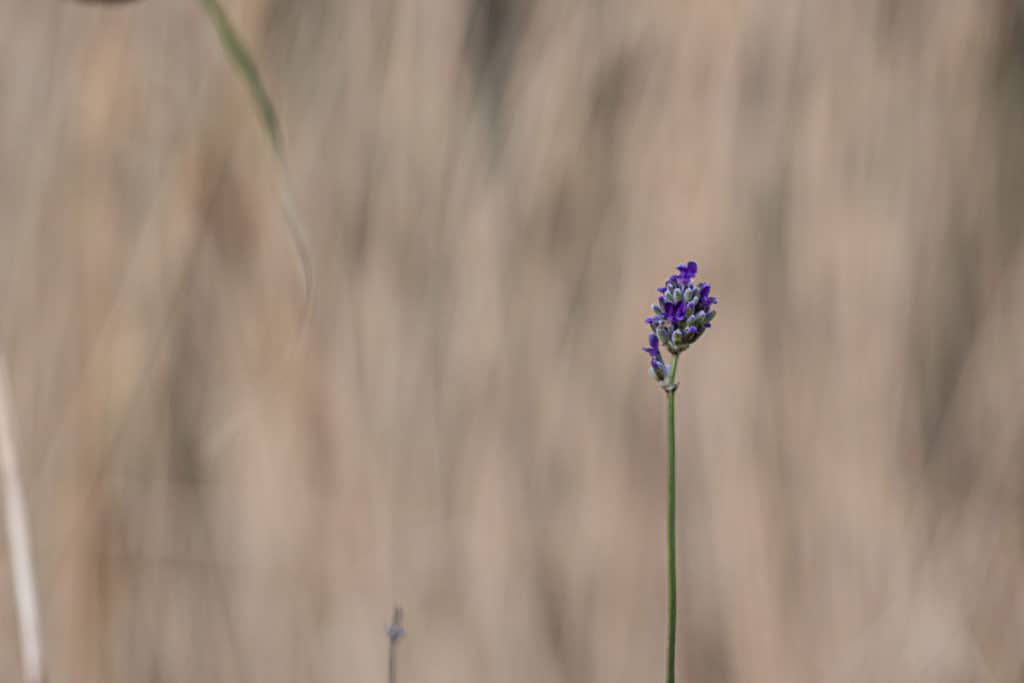
And Makes it Look Sharper – F5 1/250th Second
Photo by Oscar J Harper
Let’s open up the aperture and focus on the flower to blur out the background. As we open up the aperture we need to increase the shutter speed to compensate for the extra light entering the camera.
In a studio, of course, you have full control of the scene and can add or remove whatever you need in the composition to achieve the desired image or story.
Story (Juxtaposition) in Photography Composition
Juxtaposition in photography can help to tell a story. This is the placing or viewing of two or more things in close proximity with a contrasting effect. The contrasting elements could help to reveal two sides of the same story and combine them into one understandable narrative.
In this case, the two visually different elements help to describe more about the scene than the individual components could alone. It is a very powerful tool for composition.
Imagine a homeless person sitting in the foreground against a backdrop of a gleaming city business district. Smartly dressed people meander past, oblivious to the plight of the rough sleeper. These two incongruous elements of the street scene serve to tell a story of the two sides of a modern city; the affluent wealth and the darker underbelly of poverty.
There could be a neat pile of freshly sawn wooden planks sitting outside a sawmill in a forest. This tells the story of where the planks came from; how they became useful building materials and eventually could become a practical building for work or shelter.
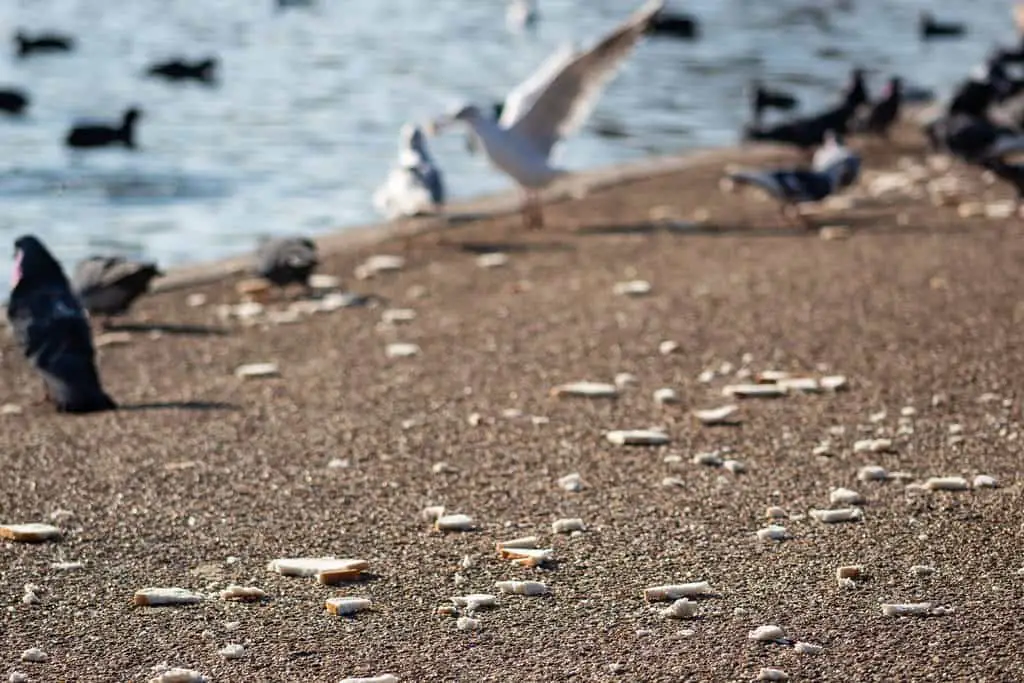
By focussing on the abundance of uneaten bread this image tells the story of the spoilt attitude of these over-fed city birds that don’t have to struggle for food left behind by tourists looking for a spectacle.
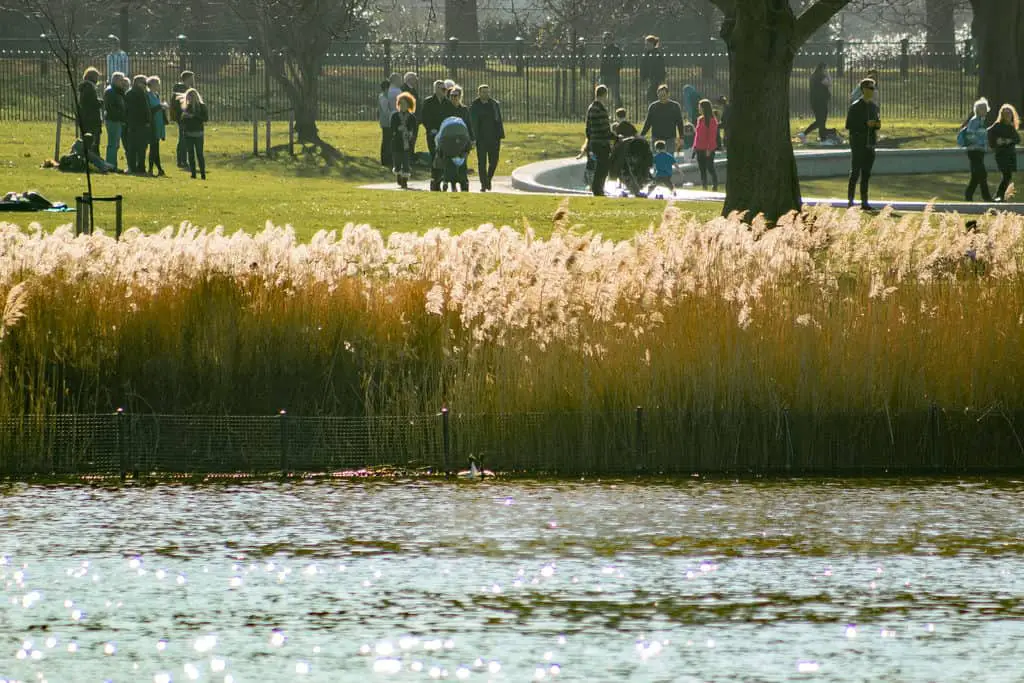
Photo by Oscar J Harper
This image describes two different worlds, juxtaposed in one place. The busy urban park is full of people strolling and playing adjacent to an aquatic wetland full of wild waterbirds and fish. The two are only separated by a fringe of tall willowy reed beds. Two very different places are captured in one photograph.
Dialogue (Balance) in Photography Composition
Sometimes a composition may seem a little unbalanced with a dominant subject off centre and a large, unfilled space on the opposite side. This is when we can introduce a balancing element into the void.
This should be an object that visually has less volume or weight but should have a similar form as the main, dominant subject. The two objects could be said to have a relationship; they are in dialogue, talking to each other across the space between them.
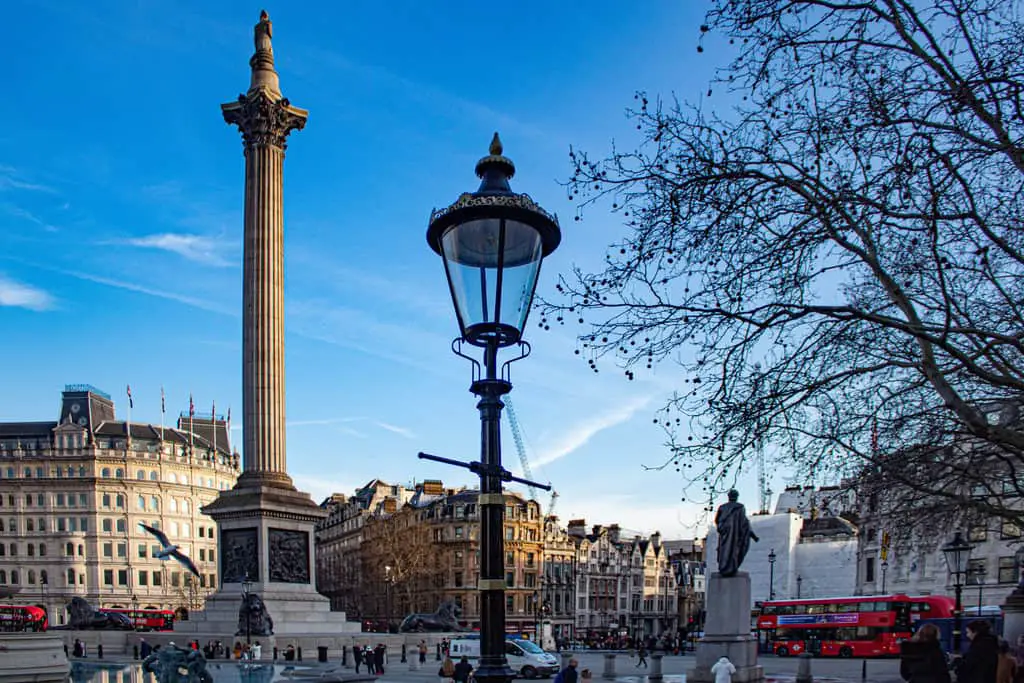
This can help to link distant parts of the composition and tie them together into one coherent arrangement.
Tension (breaking the rules) in Photography Composition
Not every photo should be beautiful or pleasing. Some themes require a darker mood to express them more meaningfully.
As we discussed earlier in the article, the principles of composition are not hard and fast instructions. There is some flexibility within each of the rules themselves but what if we deliberately set out to subvert the very intention of the rule in different ways?
Breaking the rules set out above can create an uncomfortable tension in your images. This anxiety might have some value in cases where it can increase the drama and hold the viewer’s attention; it could make the viewer look twice. It could amplify the meaning or intention of the image.
Dead Centre Photography Composition
The rule of thirds is about placing subjects off-centre to create a more pleasing asymmetrical composition. What if we deliberately placed the main subject, dead centre in the middle of the frame or at an extreme edge of the frame? This could produce an unsettling arrangement that would make the viewer take notice. Some subject matter could benefit from this treatment to create tension and interest.

Dead Centre Example
This tree had a pleasing symmetrical shape, so placing it in the middle of the image gave it a quiet authority.
There isn’t a lot going on but making it dominantly fill the frame leaves the viewer with no doubt that the main subject is this tree.
Photo by Oscar J Harper
Extreme Edge in Photography Composition
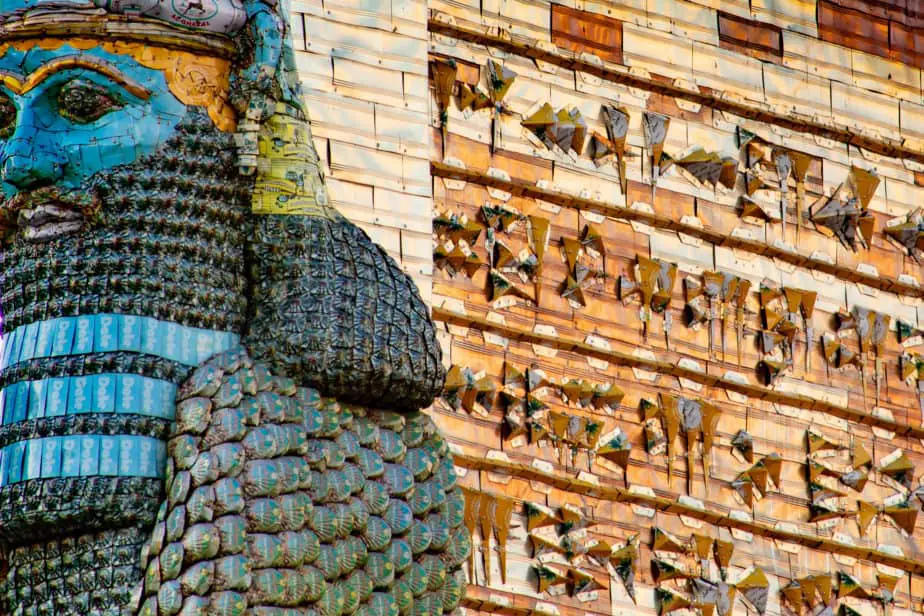
Cropping this subject at the extreme edge of the frame adds tension and drama. It’s unorthodox but interesting. It helps to focus attention on the many details and colours in the image. It is also very useful for cutting out uninteresting or confusing backgrounds.
Leave No Space in Photography Composition
What if we don’t leave sufficient space for a subject to move or gaze into? This would create visual tension as the subject would be too close to the wrong edge and looking or moving out of the frame. This could add to the mystery of the story and the intrigue of the image.
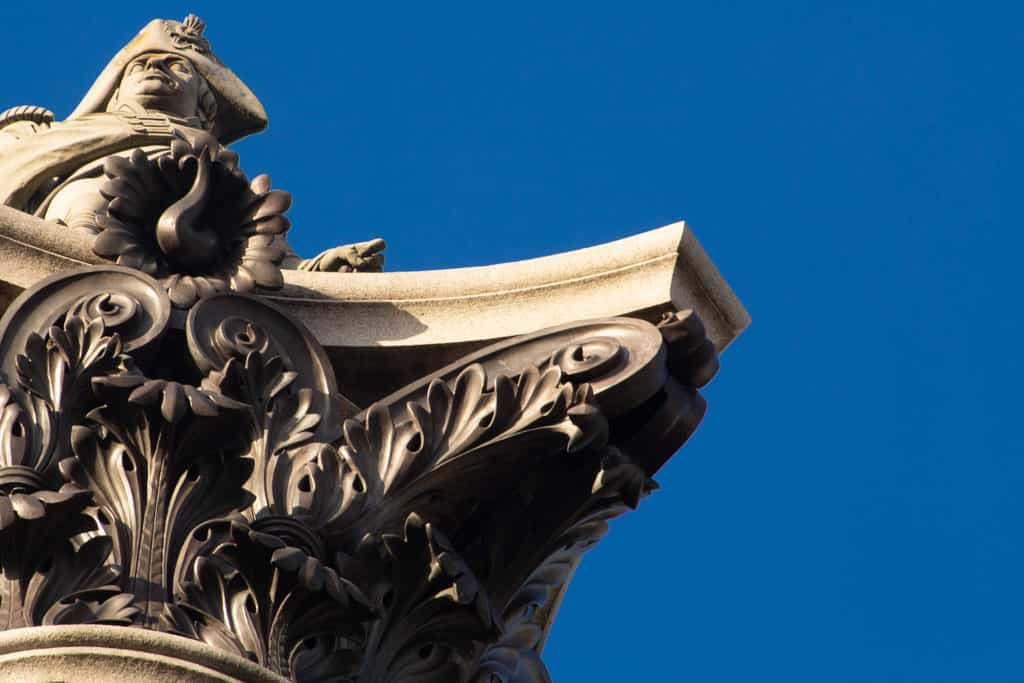
Nelson’s column was photographed from an extreme angle virtually from the bottom of the column looking straight upwards. The compressed view seemed to demand an unconventional composition. The subject is squished into a corner and has no room to breathe. This tension seems to be appropriate for this particular eccentric arrangement.
Isolation in Photography Composition
Instead of cropping the scene for impact try moving back or zooming out to leave the main subject looking small and vulnerable in a large space or landscape. This could convey the idea of isolation and loneliness.
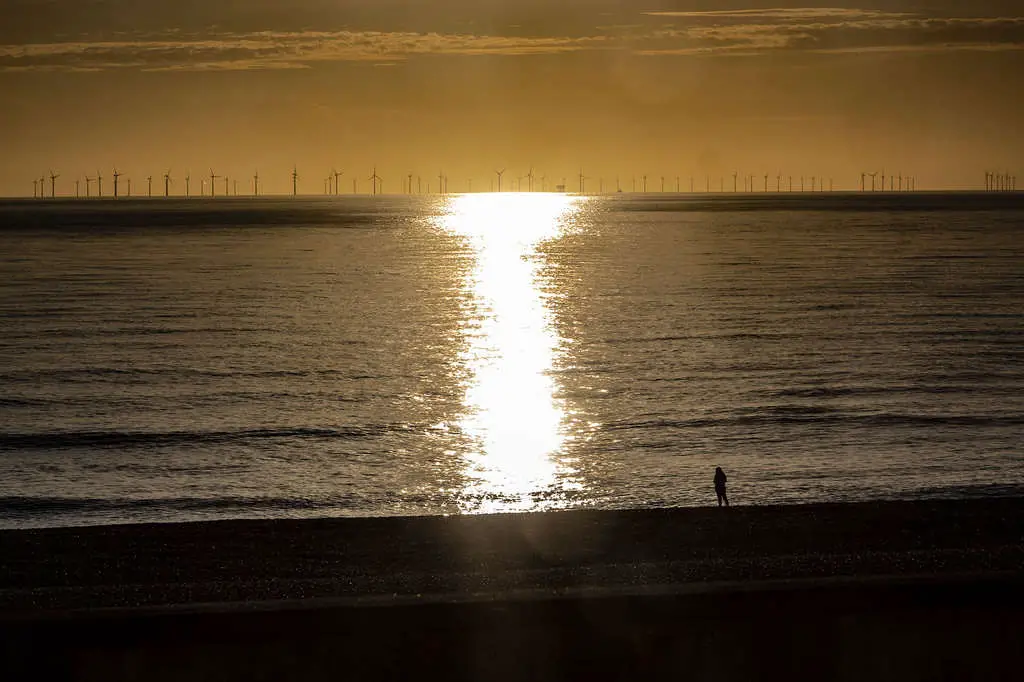
Photo by Oscar J Harper
A lonely figure all alone on the beach in the afternoon, sometime before sunset. The figure also seems to have a relationship with the distant isolated windmills on the horizon.
Leading Away Lines in Photography Composition
We could use leading lines to lead us out of the frame instead of guiding us towards a point of interest within the scene. This might trigger thoughts of the unknown occurring outside the frame.
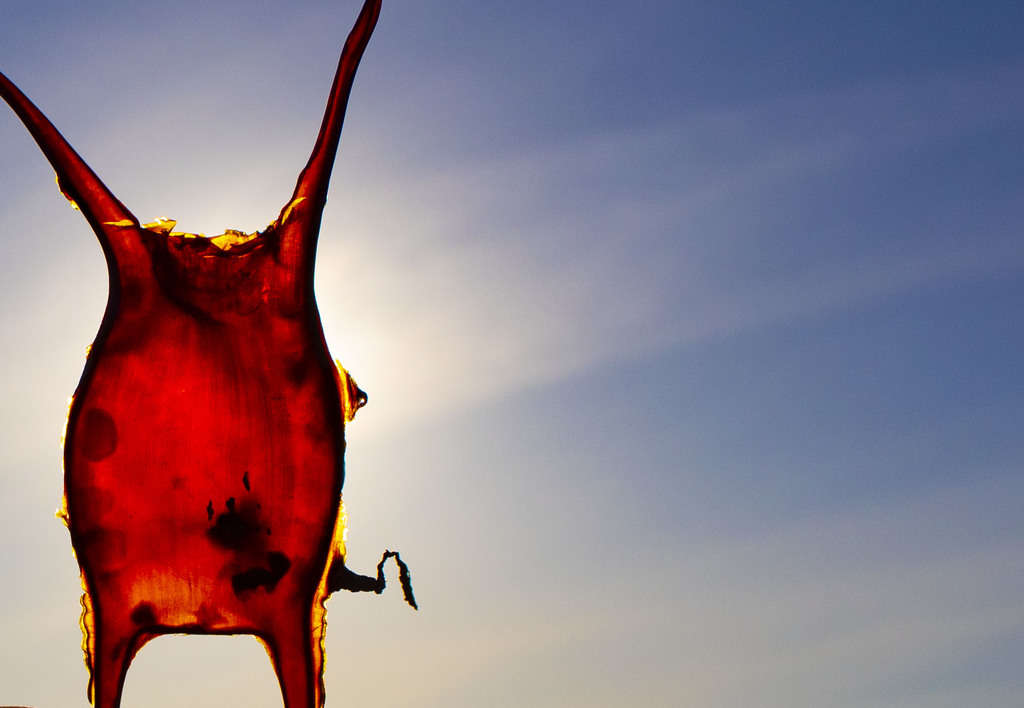
Photo by Oscar J Harper
Clashing Colours in Photography Composition
Instead of looking for complementary colours that contrast, consider the juxtaposition of clashing, similar colours. They might only have subtle differences but they could produce a striking image that requires the viewer to spend a little more time observing and understanding the image.
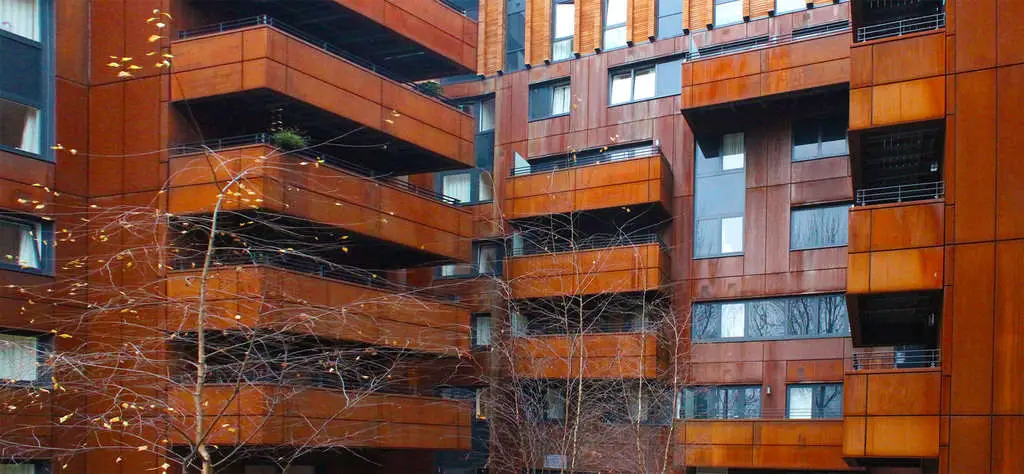
The subtle differences in the rusty brown colours work well together in a palette of similar hues.
Related Questions
What is Aperture in Photography and How to use it?
In the simplest terms, the aperture in photography is an opening in the lens. This opening is adjustable to define the amount of light that passes into the camera when the shutter opens. To discover more about this very important aspect of exposure click here!
What is Shutter Speed in Photography and How to Use it?
It is very important to understand shutter speed in photography. Knowledge will allow you to control and manipulate your photos for greater creative results. See the guide on shutter speed here!
What is ISO in Photography and How to Use it?
Knowledge of ISO in photography can unlock otherwise impossible potential in difficult lighting conditions. If you would like to understand more about ISO click here!
Why do Buildings Lean in Photos?
Adjusting the verticals of buildings to be more parallel can improve the composition of architectural photographs. This article, here in Photography Skool, will help you understand why buildings appear to lean in photographs and explain some techniques to help mitigate the problem.
How do You Avoid Shadows in Indoor Photography?
Composition can be employed to include or exclude shadows in the overall design of the image. To find out more about eliminating shadows in indoor photography, take a look at our helpful tips in this article, right here in Photography Skool.

